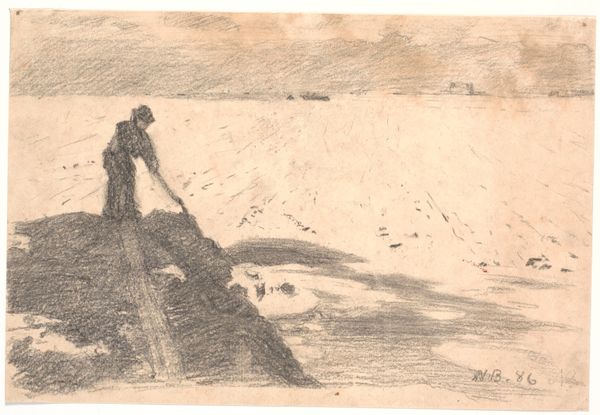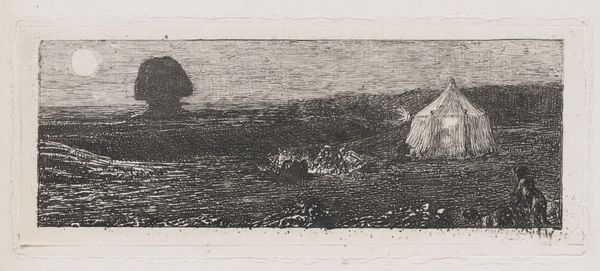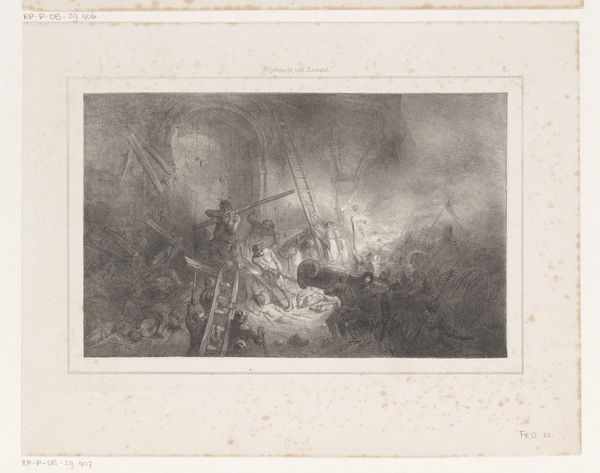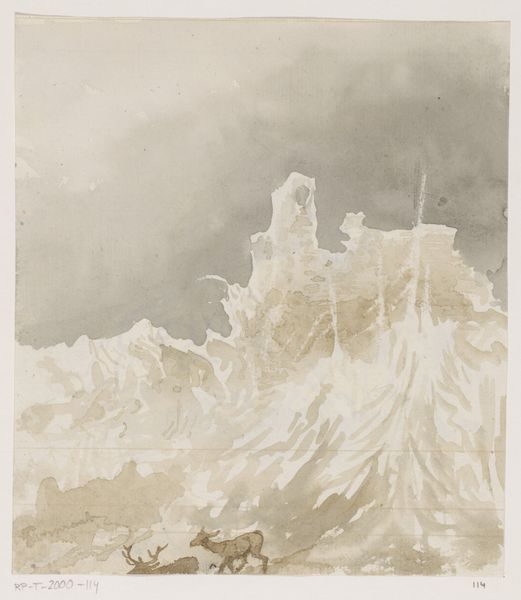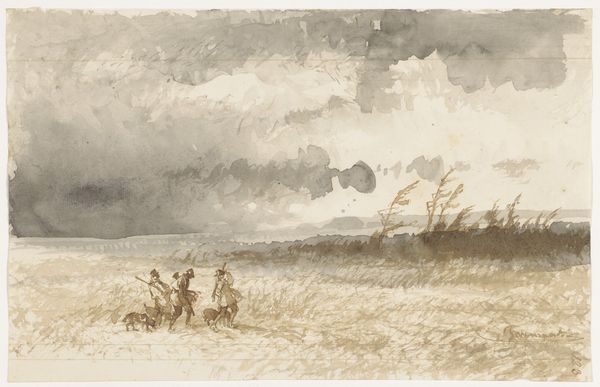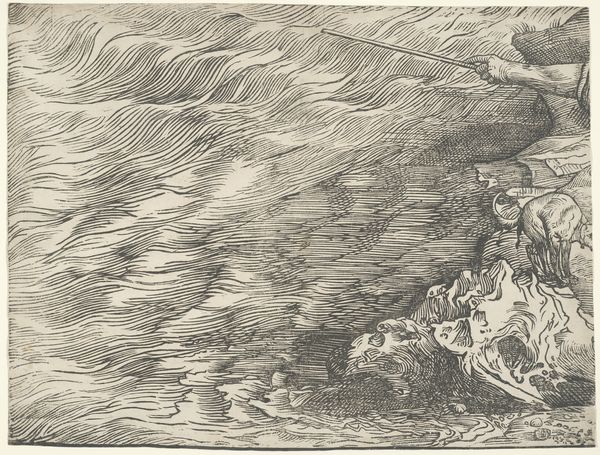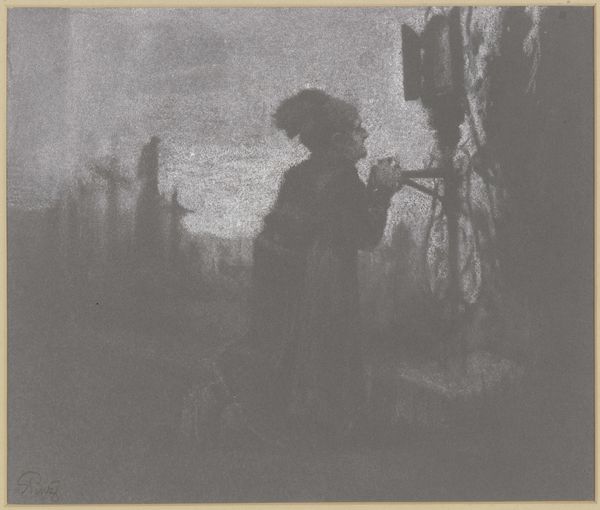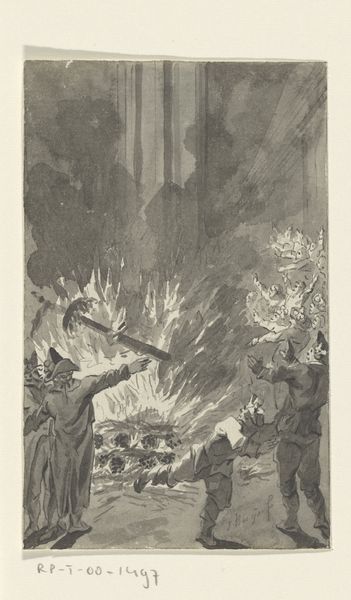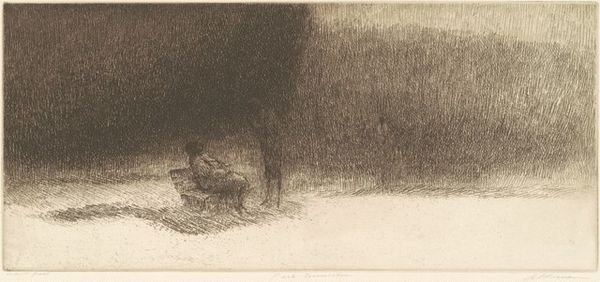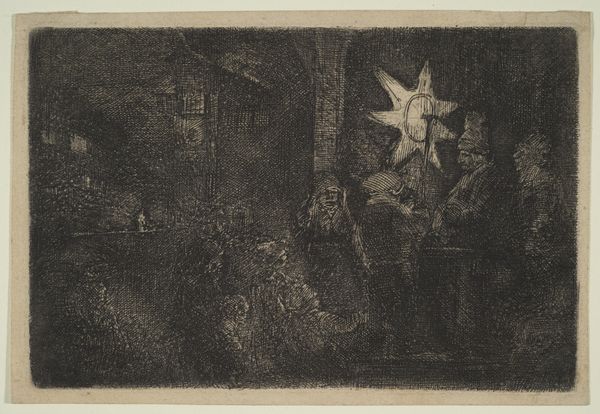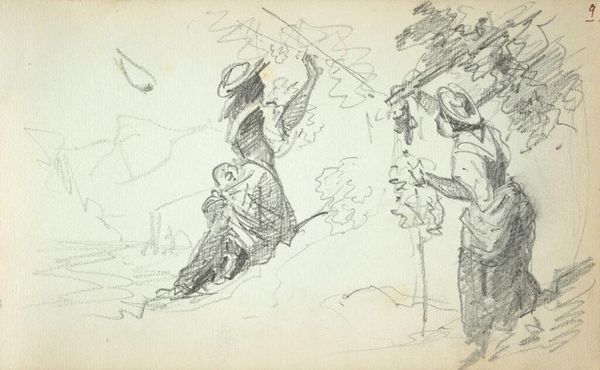
drawing, pencil, charcoal
#
drawing
#
narrative-art
#
charcoal drawing
#
charcoal art
#
underpainting
#
pencil
#
genre-painting
#
charcoal
#
charcoal
#
realism
Dimensions: height 169 mm, width 269 mm
Copyright: Rijks Museum: Open Domain
Editor: This artwork, created before 1910 by H.C. Louwerse, is called "Man Kneeling by a Woman's Bed," rendered in pencil and charcoal. It's a really somber piece, casting the whole room in a rather melancholy light, don’t you think? What aspects of the time period or social norms do you feel this artwork reflects? Curator: This work speaks volumes about the cultural and social narratives surrounding illness and mortality during that time. Consider the performative aspects of grief and piety that were so closely tied to social standing and acceptance. Do you see how the man’s posture and clothing, likely of a working-class individual, could signify not just personal sorrow but also an adherence to expected societal behavior in the face of death? Editor: That’s a really interesting point about performing grief. I hadn't considered that angle. The dim light and the sparsely furnished room… Curator: …Exactly. These elements heighten the sense of intimacy and private suffering, but they also reinforce the socio-economic context of the scene. A lone candle, a modest room—these details suggest a narrative about the working class experience and the constant presence of hardship in daily life. How does the inclusion of the seated woman in the shadows influence your perception? Editor: It’s interesting. It definitely emphasizes the loneliness and helplessness in the room. It almost feels staged. Like, who gets to be present during this… most painful moment? Curator: And isn't that staging part of what genre painting aimed to achieve? To construct relatable, and perhaps didactic, scenes that subtly shaped public opinion and moral codes? Think about the museums and exhibitions where such works were displayed. What kind of social values were promoted and reinforced through these visual narratives? Editor: I suppose I was focused on the figures in the artwork itself, rather than the world it entered after being created. Now I see how this simple, emotionally powerful drawing reflects the complex relationship between art and its role in society at that time. Curator: Indeed, it makes you think about representation and who is afforded it. This has been very illuminating, a good reminder of the importance of questioning the underlying social and political underpinnings of art.
Comments
No comments
Be the first to comment and join the conversation on the ultimate creative platform.
